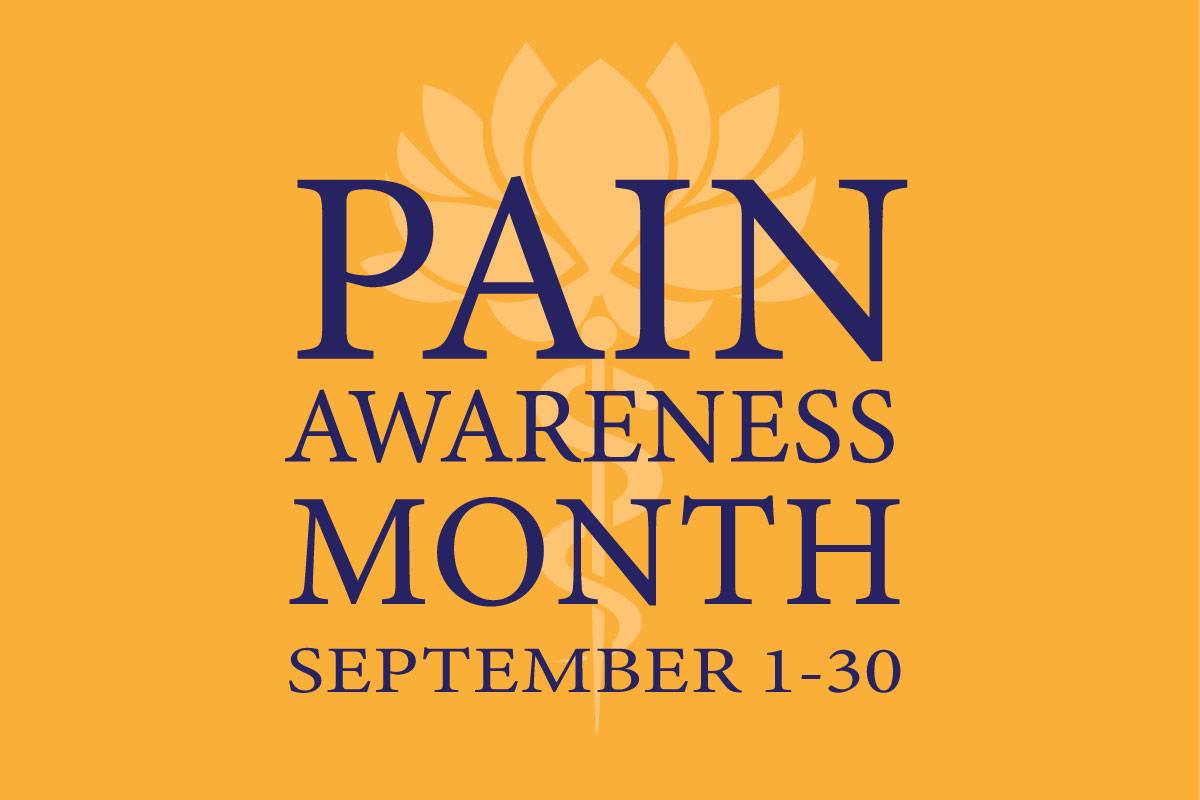
5 Ways We Can Keep Your Immune System Strong
December 10, 2025/by Kaplan Center
Want to Take Your Workout to the Next Level Next Year? These Tips Can Help
December 8, 2025/by Kaplan Center
Dr. Kaplan’s Dos and Don’ts of the Holiday Season
December 3, 2025/by Kaplan Center
Let’s Talk Webinar – A Root Cause Q&A
December 2, 2025/by Kaplan Center
Navigating Holiday Meals with Gut Issues: Simple Tips for a Comfortable Season
December 1, 2025/by Chardonée Donald, MS, CBHS, CHN, CNS, LDN
Craniosacral Therapy for TMJ | Say Goodbye to the Daily Grind
November 19, 2025/by Patricia Alomar, M.S., P.T.
From Compassionate Care to Personal Healing: A Letter to My Patients
November 18, 2025/by Kaplan Center
8 Steps to a Healthier Gut—and a Longer, Healthier Life
November 18, 2025/by Kaplan Center
Mid-Life Irritability & Fatigue Improved by Hormonal Balancing
November 13, 2025/by Lisa Lilienfield, MD
From Challenges to Change: Dr. Kaplan on Healthcare’s Biggest Challenges
October 29, 2025/by Kaplan Center
Overlooked Dangers of Mold Exposure and How to Stay Safe – Dr. Kaplan Talks to WUSA9
October 27, 2025/by Kaplan Center
Let’s ‘Fall’ Into Wellness: A Nutritionist-Approved Immune-Boosting Recipe for Cold and Flu Season
October 13, 2025/by Chardonée Donald, MS, CBHS, CHN, CNS, LDN
PANS/PANDAS – When Sudden Symptoms Signal Something More
October 9, 2025/by Kaplan Center
Beating Burnout, A Nutritionist’s Perspective
October 1, 2025/by Chardonée Donald, MS, CBHS, CHN, CNS, LDN
3 Things That Can Happen After Stopping GLP-1s
September 11, 2025/by Chardonée Donald, MS, CBHS, CHN, CNS, LDN
What Families Need to Know About COVID and Flu Season
September 3, 2025/by Kaplan Center
September is Pain Awareness Month
September 1, 2025/by Kaplan Center
Dr. Kaplan Spoke to Northern Virginia Magazine About COVID, Flu, and Immunity — Here’s What You Should Know
August 14, 2025/by Kaplan Center
“Why Do I Feel Like Crap?”: The Overlap Between Long COVID and Perimenopause
July 30, 2025/by Kaplan Center
Why People Are Turning to EMDR (and Why You Might Want to Too)
July 23, 2025/by Kaplan CenterAre you looking to improve your overall wellness?
Personalized care you can trust.
Our integrative, non-surgical treatment approach is highly successful in maintaining wellness and also treating chronic pain and illness. For more than 30 years, we have delivered superior, cutting-edge health care in the Washington, DC area.
QuickLinks
Contact Information
Tel: 703-532-4892
Fax: 703-237-3105
6829 Elm Street, Suite 300
McLean, Virginia 22101
Map It
Hours of Operation
Mon – Thu : 8 am – 5 pm, ET
Fri : 8 am – 12 pm, ET
Why Meditation Is One of The Most Important Things You Can Do for Heart Health: A Doctor Explains
/in Meditation/by Gary Kaplan, DODespite medical advances, heart disease remains the number one cause of death for both men and women in the United States. This is a startling reality, especially given how preventable it is for those of us that are not genetically predisposed. Stress, along with smoking, sedentary habits, and a poor diet are some of the main lifestyle-related risk factors that increase your chance of developing the condition.
This article looks specifically at stress as a risk factor for heart disease, and meditation as a natural and proven method to mitigate its effects.
How The Stress-Response System Works
Whether it’s related to work, health, money, relationships, or some other life event or situation, stress eventually finds its way into your life. Thankfully, your body is well equipped to handle stressful situations thanks to the autonomic nervous system (ANS). The ANS is dedicated to regulating processes such as increased heart rate and shallow breathing, which kick in when you begin to experience stress or anxiety.
The stress-reaction process is truly an amazing and efficient one: when your body is under stress the amygdala in the brain fires up and sends an alert that there is a stressor, then the sympathetic nervous system is activated and prepares your body to “fight or take flight.” Your adrenals then go to work, supplying your body with cortisol and adrenaline, completing the trifecta of the stress-response process.
Typically the stress-response system is self-limiting, and when the stressor is gone, cortisol and adrenaline levels subside, and allostasis or stability is restored to your body. However, when the stress-reaction process is repeated multiple times over a relatively short period, stress becomes chronic, and the system breaks down. This is called “allostatic load,” which often results in an increase in physiological issues that compromise your immune system, inducing illness, and even accelerating disease processes such as diabetes, cancer, and heart disease.
Questions? Give Us a Call!
703-532-4892 x2
Why Meditation Can Help Your Heart
The practice of meditation for stress relief has become more widely accepted as a complementary treatment to conventional medicine. As research affirms its positive psychological and physiological effects on the body, the attitude of “it can’t hurt” has shifted to “it can help.” According to an NIH survey done in 2017, next to yoga, meditation is the second most used mind-body therapy in the U.S.
How Lowering Stress Promotes Heart Health
A regular meditation practice can play a role in reducing cardiovascular disease by:
The bottom line: Meditation is a practice that you can do anywhere at any time, alone in the privacy of your own home, or in the company of others. As with many things in life, getting started is the hardest step. Private consultations with a trained practitioner can be a wonderful way for you to take that first step or to enhance an existing practice.
Below you’ll find some additional studies that demonstrate the positive effects of meditation, as well as yoga (which incorporates many of the wonderful elements of meditation), on cardiovascular health.
In the battle against stress and even heart disease, there is a lot you can do! By being proactive now, you can bring about changes that can make a significant difference in how you feel, both physically and emotionally, in the very near future.
We are here for you, and we want to help.
Our goal is to return you to optimal health as soon as possible. To schedule an appointment please call: 703-532-4892 x2
This article first appeared in Dr. Kaplan’s column on MindBodyGreen.com. Reviewed and updated April, 2024.
Mycotoxin Illness: Could the Air You Breathe Be Making You Sick?
/in Conditions/by Lisa Lilienfield, MDYears ago I had a teen patient who presented with nausea, fatigue, weight loss, and cognitive decline. He was so sick, he was missing weeks of school at a time and could not keep up. After a thorough workup, I tested him for mycotoxins, naturally occurring, poisonous substances that are released by certain types of fungi (aka mold), through a urine test. He had 3 different types of mycotoxins, but the level of one certain type of black mold toxin, called trichothecene, was through the roof. He had been living in the basement of his family home. The home was tested, and mold was found and remediated. Fortunately, I tested several other family members who were all negative.
However, finding and ridding the environment of the mold was not enough to heal my patient. Toxins had settled into his tissues and because his liver genetically was not clearing them help was needed. First, he moved out of the house, left high school temporarily, and moved in with another family member in order to remove himself from the toxic environment completely. I then put him on supplements to support the liver detox process, and binding agents to reduce the toxic load through the gut. I also gave him supplements aimed at lowering inflammation in the brain and nervous system. It took several months, but over time he felt better and was able to move back home to finish school. He is now a healthy, happy young man who just left home for college.
I’m happy to report things ended well for my patient. Unfortunately, this type of case is becoming more common, but why?
About a half-century or so ago we lived and worked in homes and buildings that were more open to outdoor air. Over the years our homes and buildings have become more airtight and climate-controlled so that we are now breathing recirculated indoor air as opposed to outdoor air. In addition, instead of being built with plaster our homes and buildings are constructed with porous drywall which when combined with moisture creates a feeding frenzy for mold.
What are molds?
Molds are a group of fungi that produce airborne spores. In nature, molds are decomposers that recycle nature’s organic wastes. In medicine, they are the producers of antibiotics such as Penicillin or drugs, like ergotamines, used for migraines. Some molds and fungi, like cheese and mushrooms, are delicacies. However, when certain molds infiltrate our environment, they can wreak havoc on our health.
When there is water intrusion in your home or work environment, such as occurs in a flood or even with a minor water leak, within two days mold spores that have either lain dormant or have come from the outside start to feed off the drywall that is now wet. The mold spores produce mold toxins called mycotoxins. Mycotoxins can thrive under the right conditions (high temperatures and moisture are the major determining factors). These wet areas also become breeding grounds for bacteria that produce toxins called endotoxins. The mold and bacteria infiltrate wall coverings, such as wallpaper and paint, and begin to release volatile organic compounds (VOCs), and this contaminated air circulates through the home or building.
Exposure to high concentrations of mold spores (such as black mold toxin or aspergillosis) over an extended period of time which results in the accumulation of these toxins in the body, is known as “biotoxicity” or “neurotoxicity.”
Questions? Give Us a Call!
703-532-4892 x2
Symptoms of mold toxicity
The symptoms of toxic inhalation are many. The most common symptoms are respiratory in nature, i.e. sinus congestion, sore throat, cough, wheezing and shortness of breath. This can lead to an autoimmune condition called hypersensitivity pneumonitis. However, with continued exposure, dysregulation of the immune, nervous, and endocrine systems can occur leading to a range of symptoms such as headaches, fatigue, generalized pain, depression, cognitive issues, rashes, weight gain, and digestive inflammation from ingestion of spores.
We now understand that there is genetic variability among those who have been exposed to mycotoxins. Some people are genetically capable of clearing low levels of these toxins through the liver detox process and never suffer consequences. Others do not have the ability to clear them and get severely ill, which was the case for my teen patient. This is why the “sick building syndrome” is so controversial – not everyone has the same reaction depending on the degree of exposure. However, given a high enough dose, it can be devastating. In fact, mycotoxins, like trichothecenes from black mold, have been used in biological warfare.
Mycotoxins in food

Mycotoxins can also be found in food as well as airborne. There are over 300 identified types of mycotoxins, but only a small number of these are responsible for contaminating the foods we eat. Contamination can occur at any number of points in the production process – from harvesting and storage to packaging and transportation. Staple crops like wheat, corn, barley, nuts, even coffee beans, are highly susceptible to contamination. The toxin itself cannot be seen by the naked eye so once the toxin is established in a food item it is virtually impossible to eliminate. Aside from being invisible, they are also heat resistant, so they are not affected when food is cooked.
Ochratoxin and aflatoxin, two common types of mycotoxins found in contaminated food, have been shown to cause kidney damage, cancer, and liver failure.
How we can help | Treating mold toxicity
Determining whether you have been exposed to mold toxins is not an easy task. If you suspect mycotoxin illness, we can help you with the appropriate testing and restore you to good health. The treatment process may include one or more of the options below.
-Lisa Lilienfield, MD
We are here for you, and we want to help.
Our goal is to return you to optimal health as soon as possible. To schedule an appointment please call: 703-532-4892 x2
References
Learn About Hypersensitivity Pneumonitis
Mycotoxins, World Health Organization; Fact Sheet
Immune and Nervous Systems Interaction in Endocrine Disruptors Toxicity: The Case of Atrazine
Impact of Pesticides on Immune-Endocrine Disorders and Its Relationship to Cancer Development.
Impact of mycotoxins on the intestine: are mucus and microbiota new targets?
CBRNE – T-2 Mycotoxins
Facts about Stachybotrys chartarum
Occurrence, Toxicity, and Analysis of Major Mycotoxins
Ochratoxins in Wines: A Review of Their Occurrence in the Last Decade, Toxicity, and Exposure Risk in Humans
This article was originally published in December 2017. It was reviewed and updated in April, 2024.
Living with Chronic Pain and Illness? You May Be Suffering from a Toxicity Disorder
/in Toxicity/by Gary Kaplan, DOAnyone can be at risk of being exposed to and affected by harmful toxins. Exposure can occur in your own home, at work, or while traveling. The good news is that for most people the liver is able to break down these toxins so they can pass through the intestines and be excreted from the body. However, approximately 20 percent of the general population lacks the enzymes needed to break down toxins for elimination, leaving this group particularly vulnerable. Instead of being excreted, harmful toxins can be reabsorbed through the lining of the intestines back into the body. The body then sequesters them wherever it can, damaging the muscle tissue, nerves, and nervous tissues in those “holding areas.”
You can be exposed to toxins in the following ways:
If you think you have been exposed to toxins that are affecting your health, call and speak with a nurse today: 703-532-4892, ext. 2.
Not all toxins are the same
Biotoxins
Biotoxins are toxic substances from biological sources, like plants, bacteria, molds, and animals that alter the body’s normal biological systems that manage digestion, respiration, circulation, joint flexibility, etc. When this happens the resulting condition is called biotoxicity.
Neurotoxins
Neurotoxins affect the nervous system and disrupt the normal functioning of neurons, key cells that transmit and process signals in the brain and other parts of the nervous system. This is called neurotoxicity.
Neurotoxins can be of natural or manmade origin. For example, neurotoxins can be found in molds, heavy metals (lead, mercury), and insect bites, as well as in pesticides, food preservatives (aspartame), and substances used in chemotherapy, radiation treatments, and drug therapy, among other things.
Mycotoxins
Mycotoxins are a type of biotoxin and the byproducts of fungi (molds) that can have toxic effects on humans and animals. Aspergillus, Penicillium, Stachybotrys, and Fusarium are some of the more common fungi that produce the following toxic offspring: Aflatoxins, Gliotoxins, Ochratoxins, and Trichothecenes.
Mycotoxins are primarily found in:
Questions? Give Us a Call!
703-532-4892 x2
Health effects of mold toxicity
Mycotoxins and leaky gut
The job of the small intestine is to allow nutrients to pass through its lining so they can be absorbed into the bloodstream and circulated to all the major organs. But it also works as a filter to prevent foreign or toxic substances from entering the bloodstream. When there is damage to the lining and foreign substances are able to penetrate this is called leaky gut or intestinal permeability. Since we now know that 70-80% of our immune system is located in our gut it is not surprising that the effects of leaky gut can be serious.
Researchers investigated the presence of mycotoxins in the gastrointestinal tract and concluded that Candida Albicans, one of the pathogenic fungi residing in the intestines, harmless in small amounts, starts producing gliotoxins if its number outgrows the other beneficial bacterial species in the gut, causing a myriad of neurological and gastrointestinal symptoms. Exposure to Candida Albicans and other mycotoxins results in:
Neurocognitive symptoms
In the brain, the glial cells (microglia and astrocytes) are part of an interactive network of cells that work to protect the nerves and brain from damage and ensure their proper development. Research shows that exposure to mycotoxins can suppress and impair their proper functioning, putting an individual’s cognitive development and/or function at risk.
A research study that measured IQ scores in 277 six-year-old children, who were exposed to indoor mold for more than 2 years, showed IQ deficits of approximately 10 points using a scale of intelligence, exemplifying the dangers of exposure on cognitive development in early childhood.
Other classic neurologic disorders that result from mycotoxin exposure include pain syndromes and depression, movement disorders, delirium, dementia, and balance and coordination disorders.
Mold toxicity is one of the major toxicity conditions we see at the Kaplan Center. Over the years we have gained a better understanding of the pathophysiology, or disease process, of environmental toxicity and have developed a successful treatment protocol. We have been delighted to see an extraordinary resolution of symptoms in about 50 percent of patients, and notable improvement in another 40 percent. Obviously, the protocol is not a cure-all, but it has helped a number of patients feel significantly better.
The following is a list of symptoms that may indicate the presence of biotoxins or neurotoxins in your body:
– Joint Pain – Muscle Pain – Chronic Headaches
– Fatigue – Digestive Problems – Decreased Ability to Focus
– Sleep Problems – Decreased Libido – Weight gain / Obesity
– Depression – Anxiety – Mood Swings
– Poor Memory – Irritability – Wheezing
Are the Symptoms of Biotoxicity & Neurotoxicity Similar to Those of Other Disease Conditions?
Yes. Because the symptoms of biotoxicity and neurotoxicity are similar to those of other diseases, toxicity disorders are often overlooked as the underlying cause of illness.
Can I Be Tested for Biotoxicity or Neurotoxicity?
If you are experiencing any of the symptoms listed above, and, especially if your condition has not responded to conventional medical treatment, the Kaplan Center recommends the following steps:
Treating Biotoxicity and Neurotoxicity
There are a variety of treatments available to patients suffering from biotoxicity or neurotoxicity disorders. If the underlying cause of your pain or illness is biotoxicity or neurotoxicity, your treatment plan must include a detoxification regime, or your overall recovery is likely to be incomplete and slower than it needs to be.
Your treatment plan should be individually tailored after consideration of your overall medical history, your current symptoms, your genetic makeup, your history of exposure to toxins, and your lifestyle.
In essence, a detoxification regime is designed to “draw out” toxins from whichever tissue they have been stored and “bind” the toxins at the molecular level so they can finally be eliminated from the body; this is typically done with binders and anti-fungal medications.
We also prescribe dietary changes, such as Detox Food Plans, and nutritional supplements including Glutathione, Activated Charcoal, Omega-3 Fatty Acids, Chlorella, Vitamin D, Magnesium, and Probiotics. Before purchasing any over-the-counter nutritional supplements or herbal remedies, it is important to note that:
The Kaplan Center medical team also offers integrative therapies, such as:
These alternative modalities can provide patients with significant relief from their symptoms and from any side effects of the detoxification process.
What Can I Do Now to Protect Myself and My Loved Ones from Biotoxicity and Neurotoxicity?
The MOST important thing you can do to improve your health and wellbeing is to limit your environmental exposure to toxins by:
Where Can I Get Additional Information?
For more information about Biotoxicity and Neurotoxicity, we recommend the following sources:
Websites:
Books:
We are here for you, and we want to help.
Our goal is to return you to optimal health as soon as possible. To schedule an appointment please call: 703-532-4892 x2
References
Hope, J. (2013). A review of the mechanism of injury and treatment approaches for illness resulting from exposure to water-damaged buildings, mold, and mycotoxins. The Scientific World Journal, 2013.
Sobral, M. M. C., Faria, M. A., Cunha, S. C., & Ferreira, I. M. (2018). Toxicological interactions between mycotoxins from ubiquitous fungi: Impact on hepatic and intestinal human epithelial cells. Chemosphere, 202, 538-548.
Empting, L. D. (2009). Neurologic and neuropsychiatric syndrome features of mold and mycotoxin exposure. Toxicology and Industrial Health, 25(9-10), 577-581.
Jones, D.C., Miller, G.W. (2008). The effects of environmental neurotoxicants on the dopaminergic system: A possible role in drug addiction. Biochemical Pharmacology, Volume 76, Issue 5.
Kwon-Chung, K. J., & Sugui, J. A. (2009). What do we know about the role of gliotoxin in the pathobiology of Aspergillus fumigatus? Medical Mycology, 47(Supplement_1), S97-S103
Niide, O., Suzuki, Y., Yoshimaru, T., Inoue, T., Takayama, T., & Ra, C. (2006). Fungal metabolite gliotoxin blocks mast cell activation by a calcium-and superoxide-dependent mechanism: implications for immunosuppressive activities. Clinical Immunology, 118(1), 108-116.
Liew, W. P. P., & Mohd-Redzwan, S. (2018). Mycotoxin: its impact on gut health and microbiota. Frontiers in Cellular and Infection Microbiology, 8, 60.
Wiertsema SP, van Bergenhenegouwen J, Garssen J, Knippels LMJ. The Interplay between the Gut Microbiome and the Immune System in the Context of Infectious Diseases throughout Life and the Role of Nutrition in Optimizing Treatment Strategies. Nutrients. 2021 Mar 9;13(3):886. doi: 10.3390/nu13030886. PMID: 33803407; PMCID: PMC8001875.
Reemst K, Noctor SC, Lucassen PJ, Hol EM. The Indispensable Roles of Microglia and Astrocytes during Brain Development. Front Hum Neurosci. 2016;10:566. Published 2016 Nov 8. doi:10.3389/fnhum.2016.00566
This article was originally published in December, 2018 and reviewed in March, 2024.